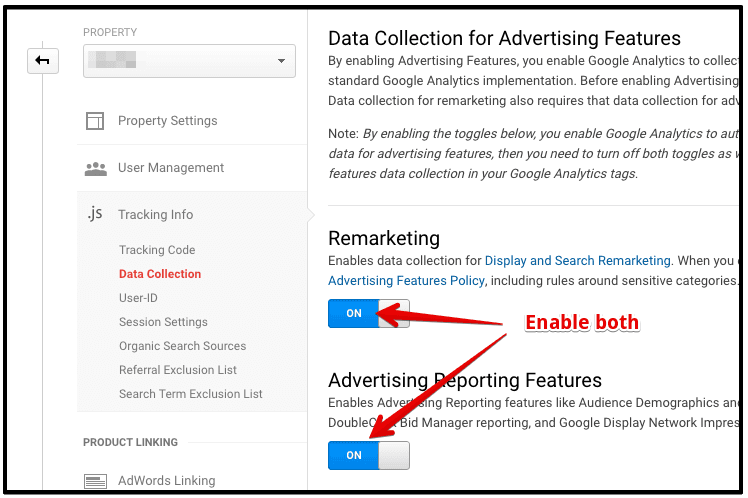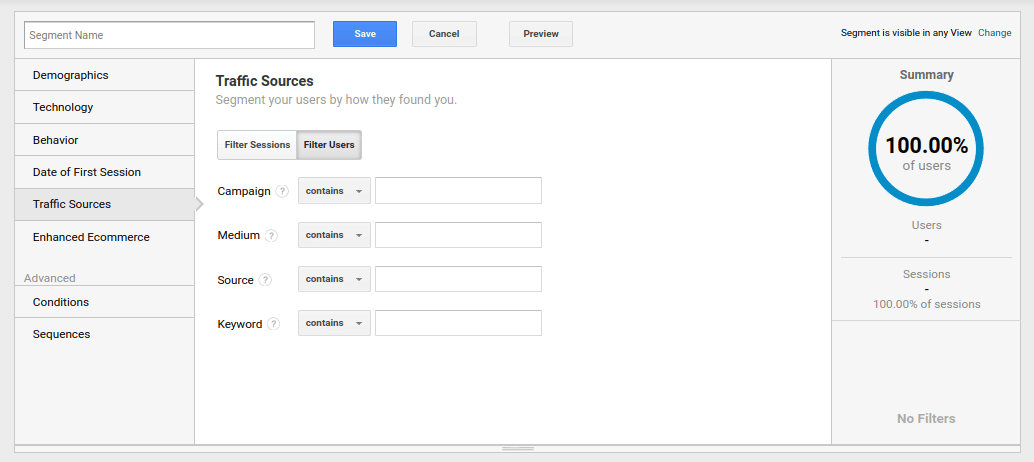Step-by-Step Tutorial: Remarketing In Google Analytics
Step-by-Step Tutorial: Remarketing In Google Analytics
Blog Article
Efficient Techniques for Remarketing in Google Analytics
With tactical target market division, tailored remarketing lists, and engaging ad creatives, businesses can craft personalized projects that resonate with their target audience. By checking out the subtleties of dynamic remarketing and leveraging sophisticated monitoring tools, organizations can open the full potential of their remarketing efforts, leading to enhanced brand name visibility and customer interaction.
Audience Segmentation
Making use of target market segmentation is a critical approach in enhancing the performance of remarketing campaigns within Google Analytics. By splitting your target market into unique groups based on their behavior, demographics, or interests, you can customize your advertising and marketing messages to be more relevant and engaging. This strategy allows you to supply individualized ads to particular sectors, raising the chance of conversion.

Additionally, target market segmentation helps you comprehend the varying requirements and preferences of different consumer groups, allowing you to craft even more engaging ad creatives and offers. This targeted technique not only enhances the efficiency of your remarketing initiatives yet also enhances total project performance.
Establishing Remarketing Lists
To efficiently carry out remarketing approaches in Google Analytics, the first action entails producing targeted remarketing listings based on specific audience interactions. Establishing up remarketing listings permits marketing experts to sector their site visitors right into different groups based on their actions, such as pages viewed, products looked for, or actions tackled the website. By defining these sectors, marketers can after that produce relevant and individualized ads that target these specific groups, boosting the likelihood of conversion.
Remarketing lists can be set up using various standards such as page check outs, duration of browse through, certain objective completions, or even particular occasions set off on the internet site. This level of customization makes it possible for marketing professionals to customize their ads to match the interests and choices of each segmented target market, causing higher engagement and conversion prices.
In addition, remarketing lists can also be created based upon data imported from other resources like CRM systems, permitting much more precise targeting. By setting up these targeted remarketing checklists, marketers can efficiently reach out to potential clients that have currently shown rate of interest in their products or services, making best use of the impact of their remarketing projects.
Developing Engaging Ad Creatives
After segmenting internet site visitors right into targeted remarketing checklists based on details audience communications, the following essential step is to craft compelling advertisement creatives that reverberate with each segmented group's choices and passions. The effectiveness of remarketing projects greatly relies upon the ability of these ad creatives to record the interest of the target market and drive them to take the wanted action.
To create compelling ad creatives, it is necessary to recognize the distinct attributes of each segmented group (What Is “Remarketing” In Google Analytics?). Customizing the messaging, visuals, and supplies to straighten with the passions and choices of the target market can considerably raise the opportunities of conversion. Making use of vibrant advertisements that automatically adjust web content based upon the user's behavior can likewise improve the customization of the advertisement great post to read experience

Tracking Performance and Optimization
Reliable monitoring of campaign efficiency and regular optimization are critical elements of successful remarketing approaches in Google Analytics. To make sure the performance of remarketing campaigns, online marketers have to frequently track vital efficiency metrics such as click-through rates, conversion prices, and return on ad invest. By keeping track of these metrics, marketers can obtain beneficial understandings right into the performance of my explanation their campaigns and recognize areas for improvement.
In Google Analytics, marketers can utilize devices like conversion tracking and target market division to examine the performance of their remarketing projects. Conversion tracking enables online marketers to track details actions that users take after clicking a remarketing advertisement, giving useful data on the effectiveness of the campaign in driving wanted results. Target market segmentation, on the other hand, makes it possible for marketing professionals linked here to divide their audience right into various segments based upon various requirements such as demographics, behavior, and passions, enabling even more targeted and customized remarketing initiatives.
Continuous optimization is vital for taking full advantage of the influence of remarketing projects. Marketing professionals need to use A/B screening to try out different ad creatives, messaging, and targeting techniques to determine the most effective approaches. By frequently assessing campaign efficiency data and making data-driven optimizations, online marketers can guarantee that their remarketing projects are achieving the wanted results and driving conversions effectively.
Leveraging Dynamic Remarketing
Making use of dynamic remarketing can significantly boost the importance and effect of targeted advertisements in Google Analytics. This sophisticated technique enables marketers to reveal customized advertisements to users who have formerly seen their website or used their mobile application. By dynamically presenting products or solutions that the customers have actually shown interest in, dynamic remarketing helps to maintain the brand name fresh in their minds and encourages them to go back to complete a purchase.

Furthermore, vibrant remarketing projects can be automated and maximized in real-time based upon performance information, ensuring that the advertisements remain effective and relevant. By leveraging dynamic remarketing in Google Analytics, marketers can produce extra impactful and targeted ad campaign that resonate with their target market and drive outcomes.
Verdict
To conclude, reliable remarketing approaches in Google Analytics involve audience division, targeted remarketing listings, compelling advertisement creatives, performance surveillance, and dynamic remarketing. By concentrating on tailored ads, data evaluation, and continual optimization, businesses can boost conversion prices and drive engagement efficiently. Leveraging devices like conversion monitoring ensures that ads continue to be relevant and personalized, resulting in total success in remarketing initiatives.
Via tactical audience division, customized remarketing listings, and appealing ad creatives, services can craft customized campaigns that resonate with their target audience. Utilizing vibrant advertisements that automatically readjust content based on the individual's actions can likewise enhance the customization of the ad experience.
Conversion monitoring allows marketing professionals to track particular actions that individuals take after clicking on a remarketing advertisement, offering valuable information on the efficiency of the campaign in driving wanted outcomes.Making use of vibrant remarketing can significantly boost the importance and impact of targeted advertisements in Google Analytics - What Is “Remarketing” In Google Analytics?.In conclusion, effective remarketing methods in Google Analytics involve target market division, targeted remarketing listings, compelling advertisement creatives, performance tracking, and vibrant remarketing
Report this page